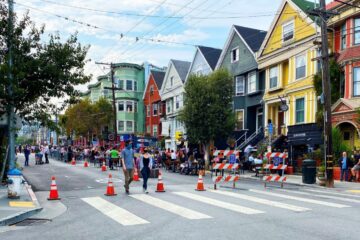🐦 Corvid-19 🐦 : What Experts Are Saying About Omicron

Pretty, pretty jackdaw courtesy of TheOtherKev.
Welcome to the new year, with a new variant alive and well! There’s A Lot Of Information swirling out there, and I’m deeply grateful to all of the public health and science communicators disseminating accessible information to the public. I’ve been thinking about curation as care, especially amid the attention economy, and after many conversations with loved ones last year about digital archives, memories, and memes (meme-ories?), I’m especially appreciating the care that often comes with the act of sending media and links to one another when we’re reminded of each other. I also adore birds, and the rep that corvids have for stealing (and gifting!) shiny things that caught their eyes.
So, reader, these are my shiny Twitter-public-health-gifts to you.
An opening note…
In light of the current peak in cases, the high transmissibility of this variant, and the variant’s ability to bypass and infect even vaccinated people with boosters, a very hard but necessary pill to swallow is that not only are we all once again vulnerable in the face of a new variant, but also that we can’t forget about the most vulnerable people in our lives. We don’t know who we can inadvertently pass infections along to, and whose immune systems can’t fight off infections as easily.
I’m thinking about this haunting and prescient passage from astrologer Alice Sparkly Kat’s 2022 beginning-of-year horoscope:
It’s important, I think, to keep in mind that the choices we make now around how to handle an infectious disease that impacts the old and immunocompromised will be choices that affect not some of us but all of us. We are not just making decisions around how we treat our old and disabled kin today. All of us are temporarily able bodied. Those who live abled bodied now are also making decisions around how we expect to be treated when we are old and when we become disabled. If we ever treat the ill and the old as burdens, we are treating our own futures as burdens.
What Do You Do When You Test Positive?
To start off, my fellow BAS writer Abraham wrote about CDC update from Dec, 27, 2021 on quarantining when you test positive here, and I recommend you check it out for the full (and I think, very clear) breakdown. To quote a gem from his piece:
These new updates are only for people who are asymptomatic. That essentially means not sick, but contagious. If you’re still symptomatic or if you develop symptoms after the five days, stay in the house longer, ass.
Here’s the information in tweet-form from vice dean of UC San Francisco’s department of Population Health and Health Equity, Kirsten Bibbins-Domingo. Make sure to end isolation after five days only if there are no symptoms and you test negative on day five. If a test is not possible, then 10 days of isolation are recommended.
.@CAPublicHealth guidance for COVID +
✅stay home at least 5 days
✅end isolation if symptoms end/resolve AND neg test on day 5
✅unable to test? 10 days isolation
✅fever? must resolve to end isolation
✅Wear well-fitting mask around others for a total of 10 days👏🏽👏🏽👏🏽👏🏽 https://t.co/yBG3kOxOUw
— Kirsten Bibbins-Domingo (@KBibbinsDomingo) December 31, 2021
A Virus Expert’s Take On How To Navigate The Next Month
It’s the ultimate FAQ on a lot of things we’ve all been wondering about how to proceed amid COVID, with Jonathan Eisen, director of UC Davis’ Microbiome Special Research Program.
Is this me, trojan horsing you, into reading an article? A little bit — but some key takeaways that I hope will make you consider checking the whole thing out. (And I get it, I Too Have A Goldfish Attention Span)
- People who are boosted are still getting infected
- Vaccines are effective in reducing the risk of severe illness and death, and even more so with a booster
- Any indoor space is a huge risk with unfiltered air (“6 feet apart” is outdated)
- Surfaces aren’t a risk (assuming you’re not licking them and you wash your hands)
- Don’t take your mask off indoors
- Saying everyone is going to get Omicron is the wrong attitude, we can make it so that not everyone gets it
With Omicron surging, is it still safe to fly, dine out or attend large indoor events? UC Davis virus expert Dr. Jonathan Eisen weighs in on this "horribly contagious" new variant and how to navigate the next month or so: https://t.co/srur3Ry9ig pic.twitter.com/gYQ8kdA2jL
— Sactown Magazine (@SactownMagazine) December 30, 2021
SF Has Some Of The Highest Vaccination Rates, But Omicron Is Still Infecting Us
UC San Francisco saw one in 12 asymptomatic tests come out as positive last week.
Read: one in 12 people you encounter who seem perfectly okay because they don’t have symptoms, could test positive for COVID. Keep your masks on when you can!
Just to keep us all humble, as chair of UCSF’s department of medicine Bob Wachter points out, although San Francisco has such high rates of vaccinations (81 percent with two or more shots), cases are skyrocketing.
Let's look @UCSFHospitals first. Test positivity rates continue to climb, though if you squint you might see a hint of a plateau. As always, my key # is the asymptomatic test pos. rate, now 7d avg of 8.27% – implying 1 in 12 people in SF without Covid symptoms have Covid.(2/12) pic.twitter.com/oSft1xTGJ9
— Bob Wachter (@Bob_Wachter) December 31, 2021
In a reversal of the earlier stages of the pandemic, currently the highest case rates are in predominantly-white and affluent neighborhoods: the Marina, Hayes Valley, and Russian Hill, as the SF Chronicle reports. The Marina’s seven-day rolling average of new COVID cases was 141, the highest in SF, and seven times higher than that of the same week in December 2020.
According to the Department of Public Health, approximately 69 percent of Marina residents are fully vaccinated, one of the lowest in the city, among the Presidio (61 percent), Russian Hill (72 percent), Lone Mountain (61 percent), Lakeshore (41 percent), compared to about 90 percent in the Bayview, and ~80 percent for neighborhoods like the Mission, the Castro, and Bernal Heights.
What’s Up With “False Negatives” On Rapid Tests?
It is possible to have symptoms but test negative because our vaccines work! Symptoms now precede contagiousness because our bodies are better equipped by vaccines to fight the virus, epidemiologist and immunologist Michael Mina notes:
IMPORTANT:
RAPID TESTS DO WORK WITH OMICRON
"But why are some people staying negative in the first days they have symptoms??"
This is expected. Symptoms don't = contagious virus
This is literally a reflection of the fact that vaccines are doing their job!PLEASE READ pic.twitter.com/YBJvNovQXL
— Michael Mina (@michaelmina_lab) December 18, 2021
Pre Symptomatic contagion has been a very difficult aspect of this pandemic
It meant that to catch infectious ppl before they spread, you’d have to test frequently
But now we have immunity & it brings relationship closer to that of other resp virus-human interactions
4/
— Michael Mina (@michaelmina_lab) December 18, 2021
Some notes from a contact tracer:
Call your state health/local health department to report your results. Unless directed to do not get retested. A POSITIVE TEST RESULT IS A POSITIVE TEST RESULT IS A POSITIVE TEST RESULT. rapid tests have fairly high false negative rates and very low false positive rates.
— kell (@keeellaaay) December 29, 2021
Here’s How To Get Your Hands On A Real N95 Mask
“If you really want no exposure, you have to wear the right type of mask,” Monica Gandhi, an infectious disease specialist at the University of California, San Francisco, said to the Wall Street Journal in an article about the limitations of cloth masks. As WSJ reports: “Gandhi recommends N95 masks, which are certified in the U.S., or the KN95, KF94 and FFP2 masks, which are certified in China, South Korea and Europe respectively. If those aren’t available, she recommends double masking—a multilayered cloth mask tightly on top of a surgical mask. Surgical masks are made of polypropylene, which has electrostatic charge characteristics that block the virus.”
TY @FastCompany 👏, by @ctrlzee: “As it turns out, at least for the time being, there isn’t a shortage of #N95s. The U.S. currently has [over] 100 million…#N95 #masks in stock. The key is getting your hands on a real one, & Project N95 is here to help.”https://t.co/gUH5SYglkL
— Project N95 (@projectn95) December 30, 2021
Last, But Absolutely Not Least, Please, Please, Please, Do Not Forget Vulnerable People Remain Extremely At-Risk In Getting COVID
Just to repeat what I opened this with – in light of the current peak in cases, the heightened contagiousness of this variant, and the variant’s ability to bypass and infect even vaccinated people with boosters high transmissibility even with vaccinations, a very hard but necessary pill to swallow is that not only are we all once again vulnerable in the face of a new variant, but also that we can’t forget about the most vulnerable people in our lives. We don’t know who we can inadvertently pass infections along to, and whose immune systems will struggle to fight off infections as easily.
Alice Sparkly Kat’s 2022 beginning-of-year horoscope, which I’ll leave you with:
It’s important, I think, to keep in mind that the choices we make now around how to handle an infectious disease that impacts the old and immunocompromised will be choices that affect not some of us but all of us. We are not just making decisions around how we treat our old and disabled kin today. All of us are temporarily able bodied. Those who live abled bodied now are also making decisions around how we expect to be treated when we are old and when we become disabled. If we ever treat the ill and the old as burdens, we are treating our own futures as burdens.
Disabled people aren't disposable. The fact that so many just state that omicron isn't as bad because it's mostly just harming disabled people is feeding into the eugenics movement that believes capitalism matters more than disabled people's lives. https://t.co/ouRo4Rs2zS
— See Mia 미혜 🌨☃️ (@SeeMiaRoll) December 31, 2021
This is vital. We don't know how #Omicron affects vulnerable groups yet.
Immunosuppressed / immunocompromised in particular- struggling against a computer system to access Booster doses are particularly exposed. https://t.co/y8YuqSvlF0
— Clinically Vulnerable Families UK💙 (Facebook) (@cv_cev) December 31, 2021
“We all need to learn how to live with Covid, and accept that Omicron is going to infect most everyone,” when not paired with a single policy explaining how to “shield” immunocompromised people safely during this time, is genocide.
— Stephanie Tait ♿️ (@StephTaitWrites) December 29, 2021
Wonderful story by Felice Freyer in Boston Globe about the impact of Omicron in the immunocompromised. For millions of people in the US, this is not "just a cold"https://t.co/zgWsxgovt9
— Dorry Segev (@Dorry_Segev) January 3, 2022
Before you push your point that omicron is 'mild', please do check and reflect on your health privileges. For many of us, it may be mild due to vaccines/boosters. However, it can be severe to criticial for the elderly, immunocompromised, and those with multiple comorbidities ⛔‼️
— Harold Henrison C. Chiu, MD (@88DoubleDragon) January 2, 2022
I’ve been too frustrated to tweet my thoughts today. The Omicron wave is really bringing out the privileged minimizing tone-policing ableist eugenics folks.
When you call them out on it, they cry bullying. They think we should take death and disability with a smile.
— Elle (@tired_elle) January 3, 2022








